We human beings like to think that's we're a pretty smart species in the 21st century. We can fly around the world, we've created 3D printing, and we've made it possible to communicate with someone on the other side of the world through the internet. Technology has enriched our lives. But the following ancient mysteries still baffle even the most well-known scientists of our time. Some of these are absolutely shocking.
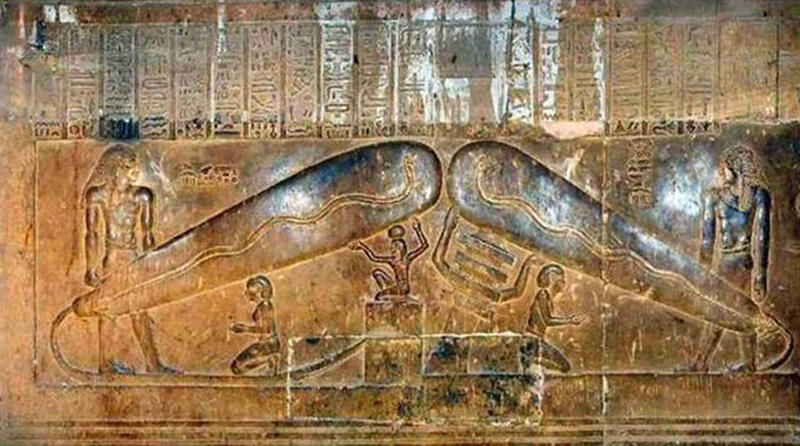
As smart as we are, though, it appears that at some stage we've forgotten some of the things that we once knew. That's why modern-day scientists are still at a complete loss to explain mysteries that date back thousands of years. The means and methods of our ancestors baffle them.
Some of the items that appear on this list seem to have been made using techniques that would have been impossible at the time. Others are just marvels of construction which we wouldn't be able to repeat today if we tried. It's no wonder some people think aliens were involved!
This anachronistic piece of technology was unearthed in what's now Iraq in 1838. There isn't just one so-called 'Baghdad Battery,' there was a whole series of them! They're a set of clay jars containing iron rods wrapped in copper, and they date back over 2200 years.

Wilhelm Konig, who found the batteries, had his archaeology students re-create the batteries under test conditions. They worked - they were capable of generating an electrical current. How and why were people creating these modern tools thousands of years ago?
At first glance, this doesn't look so strange. It's an ancient stone tablet from around five thousand years ago, upon which the reign of every ancient Sumer king is recorded. It's only when you look at the oldest entries that things become strange.

According to the text on the tablet, some of the prehistoric kings ruled for centuries. Two or three of them are credited with reigns that lasted thousands of years. A mathematical error seems unlikely because the rest of the record is accurate, so what's going on here?
The first strange thing about this 13th-century tome is its sheer size. The book is three feet high. The second thing about it is that it's handwritten, and it's all the work of one monk. To completely fill the 310 pages with handwriting so small would likely have taken ten years or more.

The third - and the most frightening - thing about it is that it contains a gigantic illustration of the Devil, and twelve pages have been torn out. For these two things, there is no known explanation.
We're all familiar with the tale of Atlantis - the ancient city that fell into the sea. Many locations around the world have been identified as a possible source of the myth - and one of the most promising is in Japan.

What you see in the picture is a rock formation just off the coast of Yonaguni Jima, and it's a minimum of 5,000 years old. Some people insist that this is a natural phenomenon - but the archway and steps don't look natural to us.
The delightfully-named Rongo Rongo writings of Easter Island have been confusing historians and translation experts for centuries. They defy translation, don't appear to be connected to any root language, and there are no native speakers of it left on the island.

Discovered in 1864, it's thought that the wooden planks that contain the writing date back to around the 13th century. They clearly have some meaning, but it's likely we'll never find out what it is. It's like an ancient code!
Not only do we not know who built these ancient fortress walls, but we also don't know how they were built. They date back to pre-Incan times in Peru, and they're so perfectly constructed that a sheet of paper couldn't pass between the cracks.

Some of the stones that make up the walls weigh more than 200 tons. It would take a large team of people with advanced machinery to build something like this today, but the Incans had none. How did they even lift the stones?
Someone in the Diquis Delta of Costa Rica had a big love of giant balls a few thousand years ago. There are hundreds of granite spheres in the area, some as bis as two meters in diameter. The largest examples weigh over fifteen tons.

We know from their placement that they were often arranged outside the homes of important tribal chiefs. What we don't know is why, or how they were created in the first place. Many of the modern-day locals have taken to using them as ornamental garden decorations!
Saksaywaman's fortress walls aren't the only inexplicable sight in Peru. There's also the Nasca Lines to think about. They're a collection of more than 100 carvings in the earth of the desert, dating back 2000 years. The majority of them are drawings of animals.

The most confusing thing about them is that they're too large to be seen from a standing position - you'd have to be passing over them in a plane to get the full effect. How did the Nascans even make the drawings when they couldn't see what they were doing?
When we hear the word 'pyramid,' we automatically think of Ancient Egypt. As incredible as Egypt's pyramids are, they're not the oldest in the world. That honor belongs to the Hellenikon Pyramid, which is somewhere around 4700 years old.

The pyramid is one of many to be found in the Argolis region of Greece. As we don't know how the Egyptian pyramids were built, we're at an even bigger loss to deduce how the Ancient Greeks went about making this one.
The Sajama Lines of Bolivia are another set of mysterious earth-carvings in South America. First noticed in 1932, the lines are up to ten feet thick, and continue for miles along the ground, often intersecting but never making clear shapes.

The lines cover an area of just under nine thousand square miles, and have been dated to around three thousand years ago. That would suggest that they were made by a tribe who were known to live around the region's volcano during that era. Their meaning is lost to time.
All labyrinths are puzzling - that's the point of them - but the ancient Hypogeum of Hal Saflieni below the streets of Malta is a particularly perplexing maze. We had no idea it was there at all until it was discovered in 1902, but it appears to have been used six thousand years ago, and for a period of around two thousand years.

The extensive maze features rooms and corridors carved directly from the rock that surrounds them, and also host ancient paintings. Who were these ancient labyrinth enthusiasts?
This site in Turkey is, if experts are right about its purpose, the oldest temple built by human hands. It's more than eleven thousand years old, and yet we didn't know it was there until Klaus Schmidt noticed it in 2008.
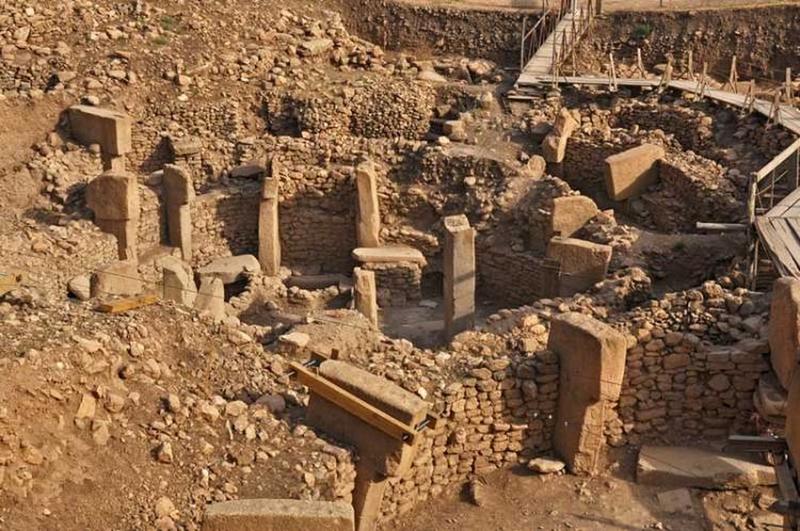
The stonework at the site is masterful, and has taught us much about how skilled our ancestors were at the art of construction. It appears they had a better aptitude for it than we do; they made the whole temple without any metal tools.
This enormous stone, found in Russia's Ural Mountains, appears to be a map. The problem with it is that it shouldn't have been possible to make such a map 3000 years ago; it contains details of mountains and rivers, including topographical information that would only be visible from above.

Even the dating of this mysterious item is controversial. Some experts have tested the carvings, and claim that they're 120 million years old. That sounds impossible - but so does making a map like this without the use of a plane.
This carving on the Parasas Peninsula in Peru very clearly seems to be a candelabra. That's concerning, because the ancient Incans didn't have much use for candelabras, and shouldn't even have known what one looked like. They weren't around 2200 years ago.
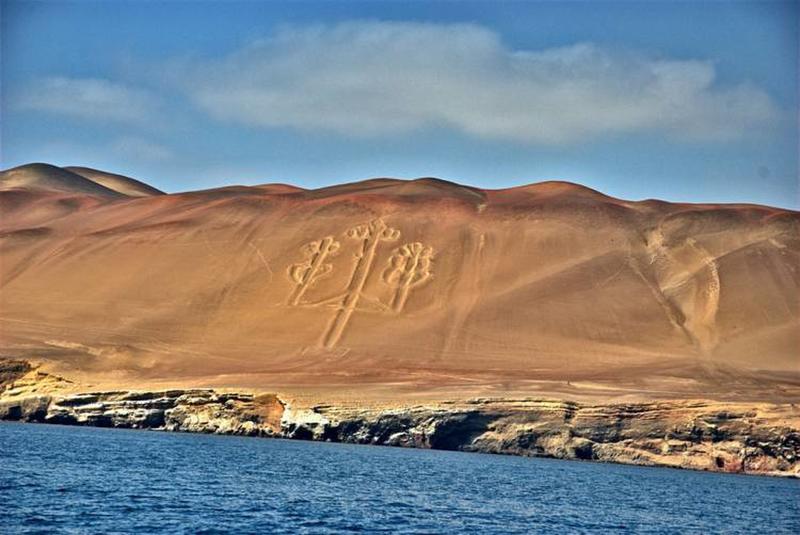
Why, then, did the Incans make a six-hundred-foot high carving of a candelabra in the Andes? The answer is that they might not have. This could be intended as a depiction of a trident belonging to Viracocha, who created the world according to Incan lore.
There are thousands of these Dogu figures in Japan, but having lots of them doesn't help us to work out what they're for. We know that the ancient Japanese were fond of them for a very long time - the newest figures are about 2,300 years old, and the oldest are more like 10,000.
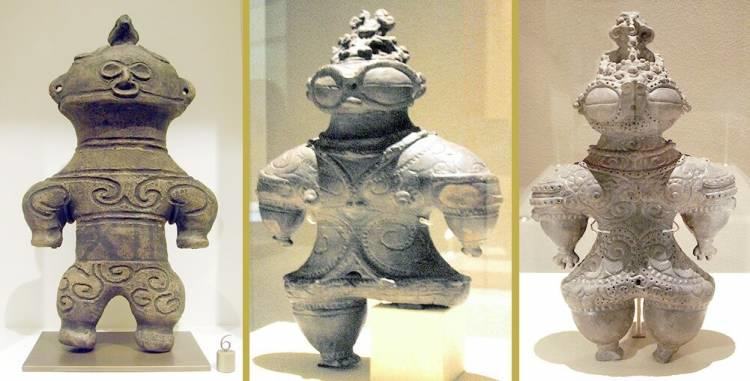
To add to the intrigue, some of them seem to be wearing goggles or glasses. Others have enormous eyes, as aliens often do in abduction stories. What do they depict? What were they used for? We simply don't know.
Many centuries ago, the land of Texas belonged to a tribe known as the Huichol. They were big on cave art, and one of the most startling examples they left behind is what's now known as the White Shaman Rock.

When the Huichol drew the painting - approximately four thousand years ago - they would never have seen a white person before. Why they chose to draw a representation of one, and make it twenty-four feet tall, is, therefore, a complete mystery.
There are two things we can tell you with absolute certainty about the Phaistos Disc. The first is that it's incredibly beautiful. The second is that nobody knows what it means.
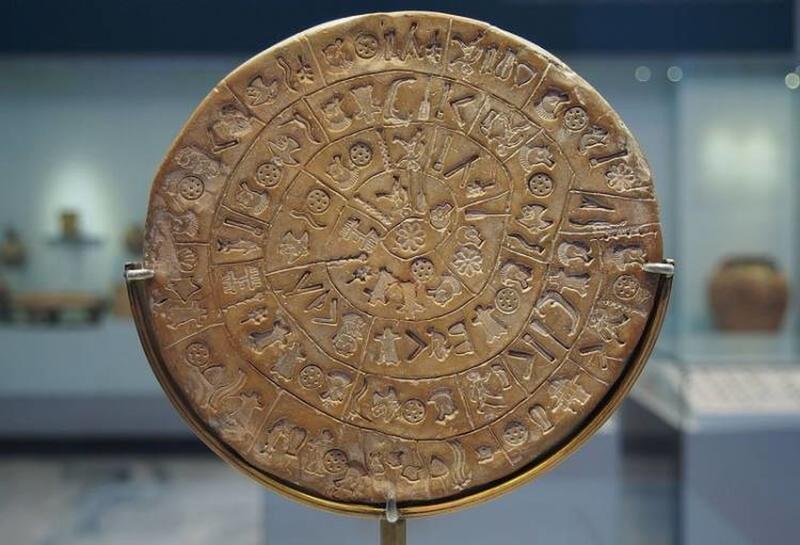
The disc, which was found in a Minoan palace in Crete, is approximately 3800 years old. There are 241 different symbols on the clay disc, and none of them are connected to any language we're aware of. Experts think it may have religious connotations, and might even be a hymn or a prayer.
This is not, as the picture might lead you to believe, a series of stone renditions of the letter 'H.' It is, in fact, Puma Punku, which is the most sacred and special of all the sites in the ancient city of Tiwanaku in Bolivia.
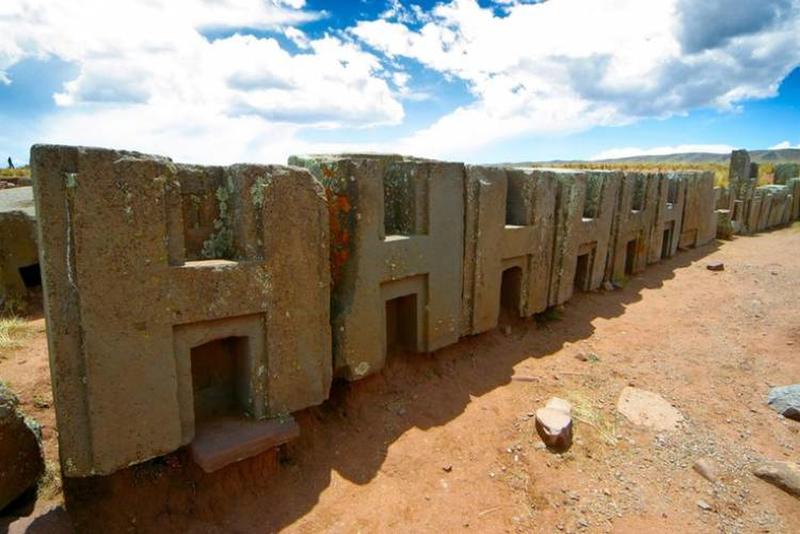
This was most likely part of an ancient temple, and dates around 1500 years. It's the stones which have been used in the construction that are such a marvel; they're perfectly cut and shaped. We could replicate them today, but only because we have powerful tools and machines.
These enormous stone jars are scattered all over Laos. They're about two thousand years old, and they come in a range of shapes and sizes. They obviously had practical value to whoever made them, but researchers disagree about what that value was.
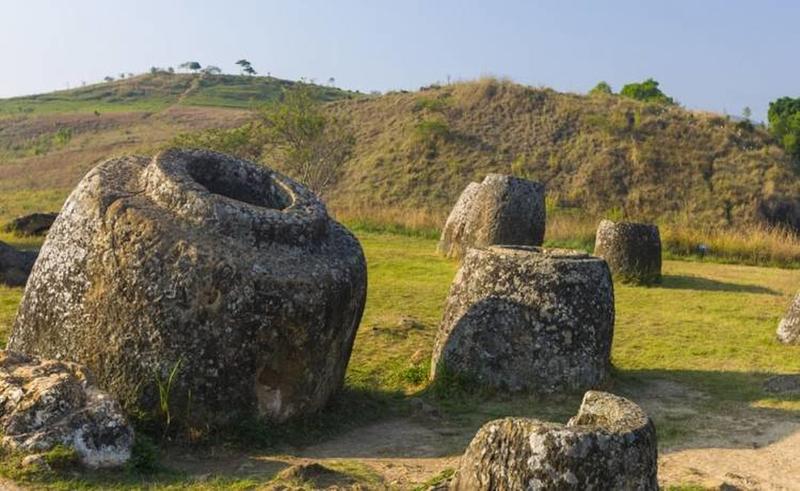
The most popular theory, postulated by Madeleine Colani in 1930, is that they were used in funeral rites. According to her, the remains of the dead were placed in the jars to decompose, and then buried later after decomposition was complete.
With a name that sounds like it comes from 'Game of Thrones,' the Lady of the Spiked Throne is a wonderfully ornate sculpture. It's 4700 years old, and depicts fifteen figures in a boat. There's seemingly a Queen on a spiky throne at the head of the vessel.

The front of the vessel is a bull's head, and so it's unlikely that this is a representation of a real boat. Historians don't know who made this, or what it was doing in the Indus Valley.
There's nothing particularly unusual about finding an ancient claw in a cave, as a team of explorers did when they investigated Mount Owen in New Zealand in 1986. It's the owner of the claw that makes it such a mysterious artifact.
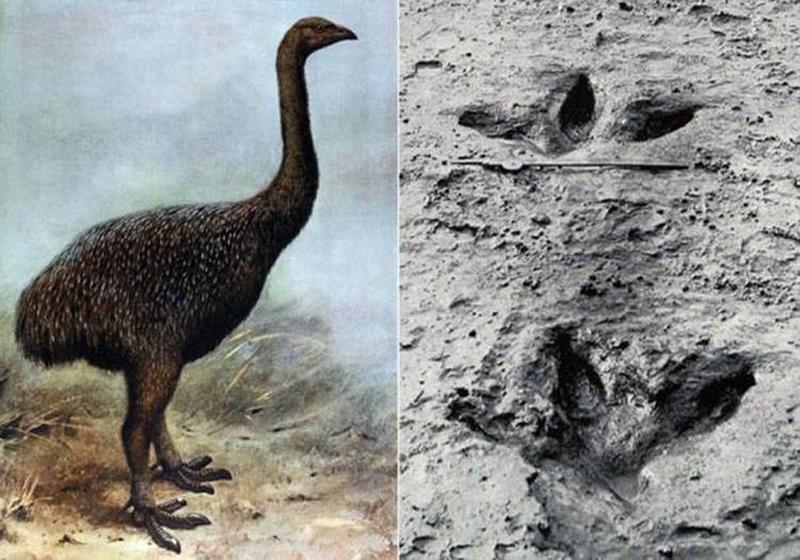
The claw belongs to a Moa bird, and still had flesh attached to it when it was found. That ought to have been impossible; the Moa bird has been extinct for three thousand years. There's no way it should have been perfectly preserved for such a long time.
Sandstone is easier to carve than most other forms of rock, and that's why our ancestors preserved to work with it when making shelters whenever possible. The Longyou Caves, found in China, are particularly impressive. Some are one hundred feet tall, and they go on for 320,000 square feet.
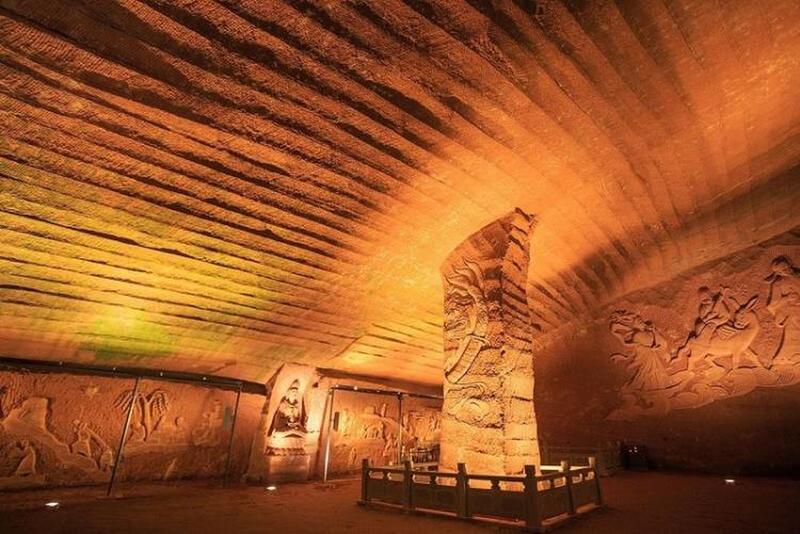
Each cave is covered in symbols which cannot be translated. They don't match any form of language that we know of from 2200 years ago. Nor is the existence of the caves recorded in any known text. We're at a complete loss as to who carved them.
The people of Jordan refer to these circles simply as 'The Big Circles.' That's quite a pedestrian name for such a puzzling mystery. These massive circles, which can be up to 1500 feet in size, are made from stones, and the walls are three feet high.
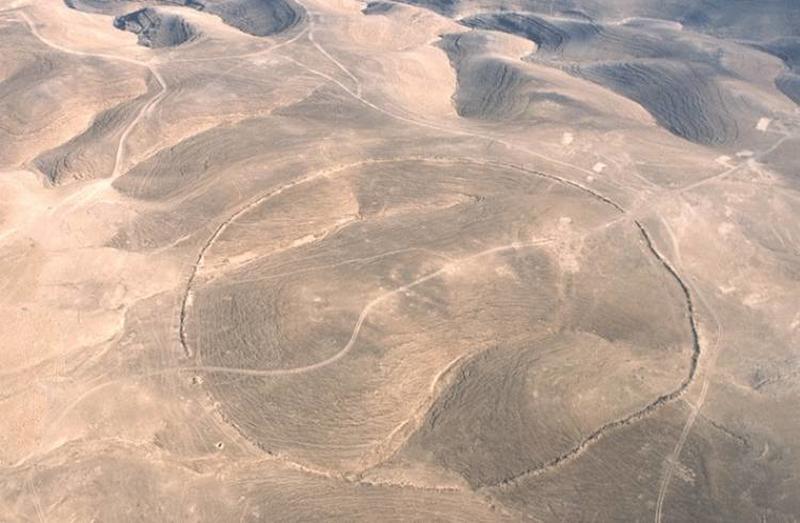
Some have speculated that they were enormous pens for animals, but they don't have any visible exits or entry points. The reason for their construction has been lost in the 2000 years since they were made.
These ancient Roman dodecahedrons may not be rare - over one hundred examples of them have been discovered - but they are unusual, and don't have a clear purpose. The oldest ones are made from stone, but at some point, the Romans started making them from bronze instead.
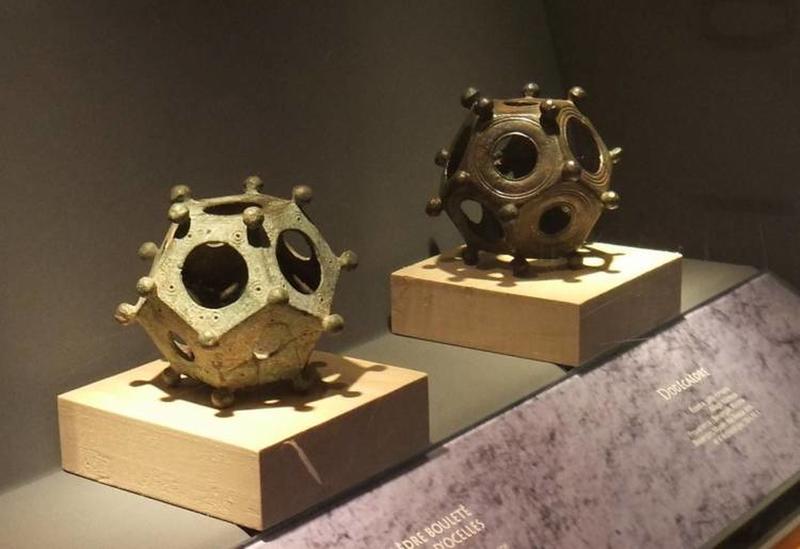
Their presence on the wrecks of sunken ships suggest that their purpose might have been nautical, but that's just a guess. Their design is intricate, but their use as tools is debatable.
These caves in China were perfect homes for early humans. They were in use around 300,000 years ago, and at five thousand feet above sea level, they were safe from rising tides.
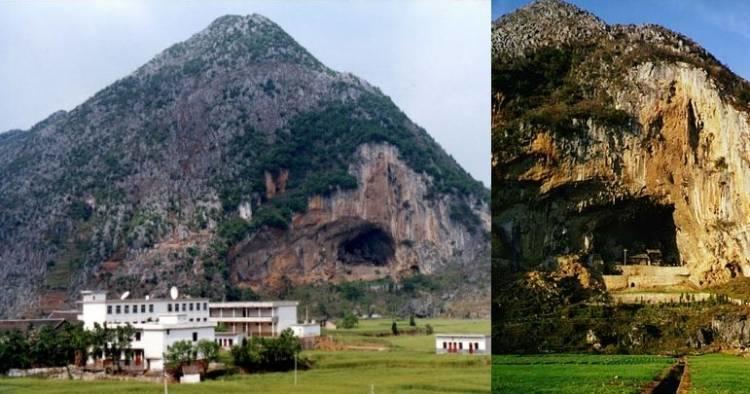
At this height, there wouldn't have been any animals, and yet they're full of animal bones including rhinos. The bones have indentations on them from stone tools, so they must have been hunted by our ancestors - but how and why were they brought up to such a height?
This bizarre dial has been perplexing researchers ever since it turned up in an ancient Greek shipwreck. It's approximately two thousand years old, and some people call it the world's first computer.
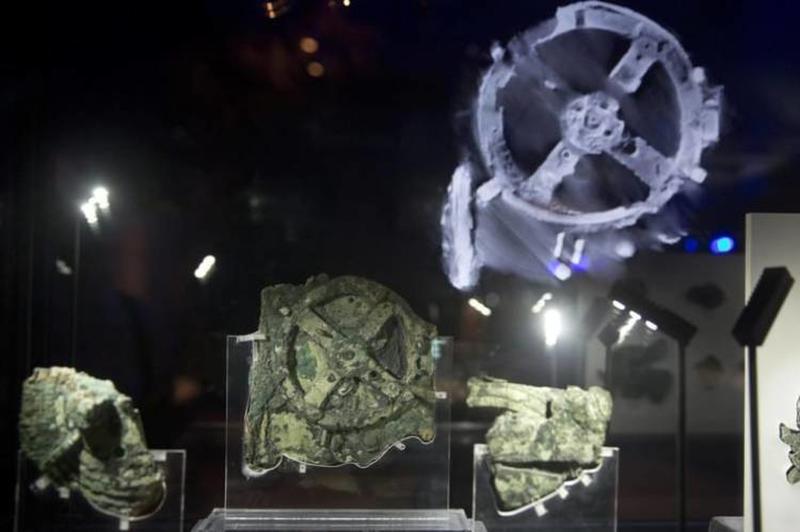
It wasn't powered by electricity, but appears to have been operated by winding it up, like an early form of clockwork. We believe it could track the movements of celestial objects, including the Moon, the Sun, and the five planets the Greeks were aware of. Nothing so advanced would be invented for another one thousand years.
The 600-year-old Voynich Manuscript is so baffling that some people believe it might have been the work of an elaborate ancient prankster. It seems designed to defy translation, despite the fact that whoever made it in Central Europe put a lot of time into its creation.

Page after page of looped text is contained within the manuscript, along with many illustrations. The current theory is that they might be an encoded form of old Hebrew, but even then, we can't make coherent sentences from the text.
It would seem that Thonis-Heracleion used to be a very important port to the Ancient Egyptians, dating back 2700 years. Like Atlantis, it was doomed by flooding, and then took centuries to find again.
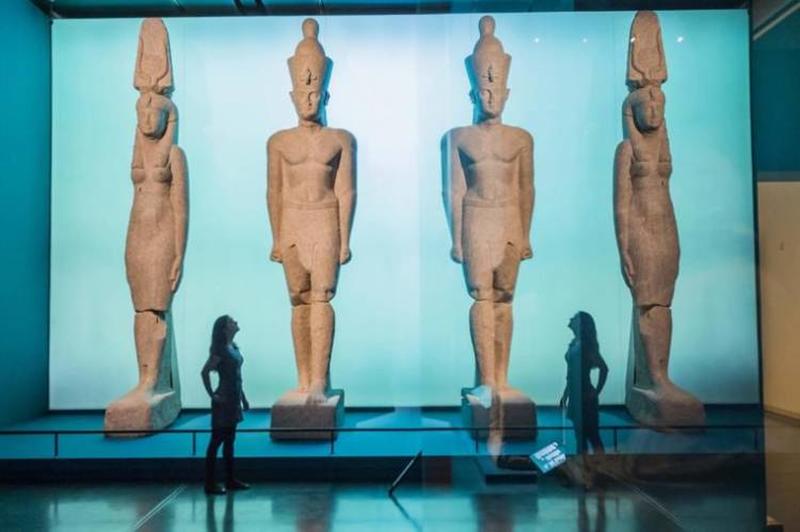
The mystery of Thonis-Heracleion was eventually uncovered by divers in the 21st century. At first, they thought they'd just found some submerged statues, but further dives located bridges, temples, and other buildings. What's unclear is how it came to sink in the first place. Perhaps a gigantic tsunami?
The ancient Minoans were an advanced (for their era) culture, and left behind plenty of statues, sculptures, and written texts carved into clay and rock. Sadly, the one thing they didn't leave behind was anything that would help us translate them.

Linear A has a partner language called Linear B. We eventually managed to translate Linear B in the 1950s, but we've had no such luck with Linear A. The language was commonplace 3800 years ago, but we have no way of knowing what the Minoans wanted to tell us.
If you have a mysterious stone structure which you're finding hard to explain, we guess 'Mystery Hill' makes an excellent name for it! This complex is sometimes called America's Stonehenge, and can be found in Salem, New Hampshire.
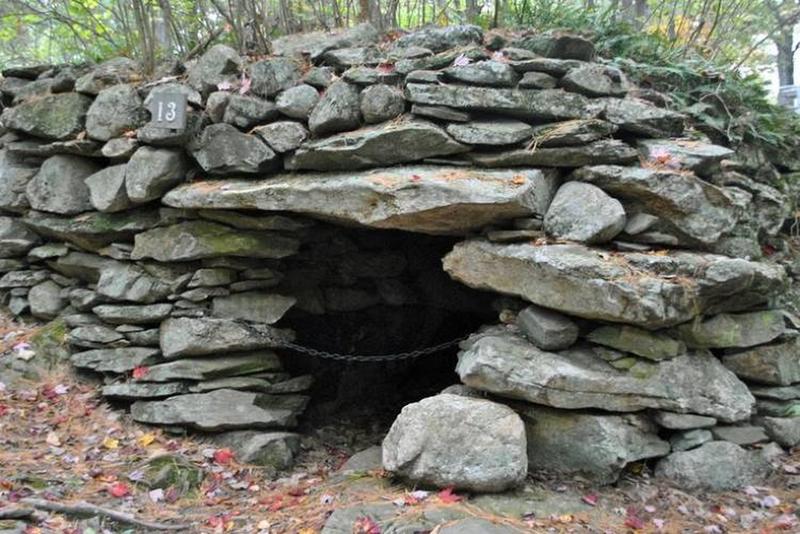
Mystery Hill is around four thousand years old, and is made up of a series of underground chambers, some of which seem to be aligned to stars. It was likely made by early Native Americans, although it's impossible to say for sure.
You might not have heard of the Copper Scroll Treasure, but you've heard of the collection that it forms part of; it's one of the Dead Sea Scrolls. The scrolls are among the most fascinating artifacts ever discovered, but the Copper Scroll Treasure promises riches beyond even their worth.

This scroll is the only one of the Dead Sea Scrolls made from metal, and lists the burial location of masses of gold and silver. So far, nobody's been able to find the treasure it promises, but many are still trying.
There are many ancient underground shelters in the world, but none as impressive as Derinkuyu in Turkey. The site is carved directly into the hillside, and is separated into a whole 18 subsurface stories.
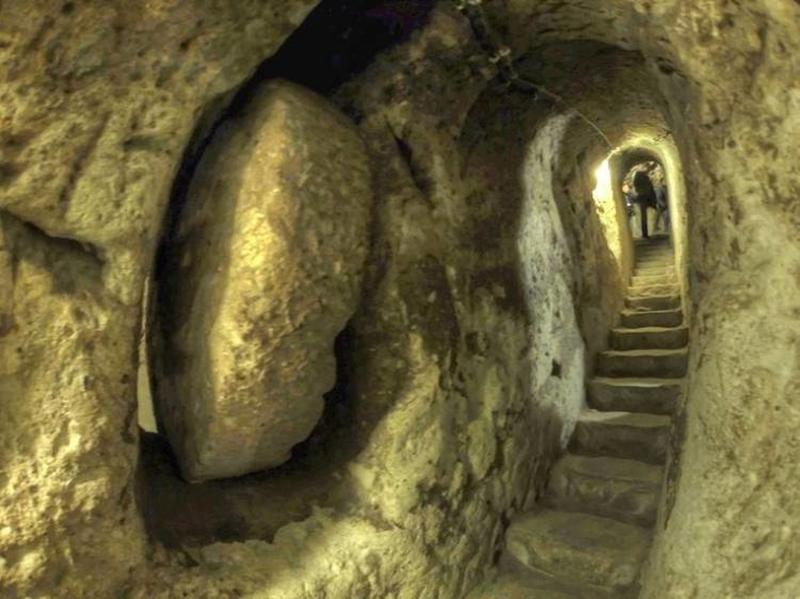
Given its size, you could call Derinkuyu an underground city. It could probably accommodate as many as 20,000 people at once, and would be almost undetectable from the surface. Because it was so obviously designed to be secret, it was most likely built by people fleeing religious persecution.
In 1938, Dr. Chi Pu Tei looked at the Bayan-Kara-Ula mountains in China and thought to himself 'they've never been explored, I wonder what's inside them?' The reward for his curiosity was the discovery of the Dropa Stones.
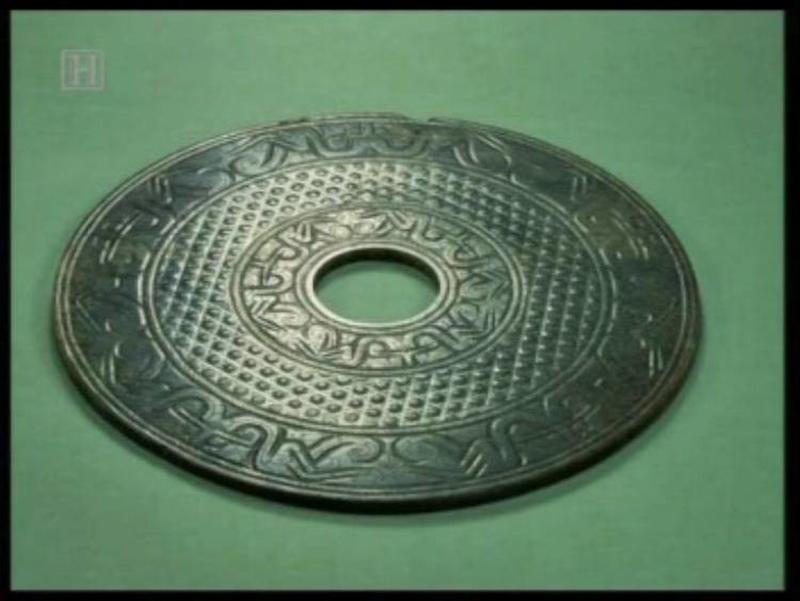
With their central holes and carefully-etched grooves, they look a little bit like stone versions of vinyl records. In each of the grooves is a series of tiny hieroglyphs, and so they might be historical records. To add to their general air of mystery, they've gone missing since their discovery!
Don't feel bad if you've never heard of Bolshoi Zayatsky; it's a tiny Russian island. What makes it remarkable is that almost all of it is covered in intricately-designed stone labyrinths. The island doesn't even cover a square mile, so the mazes account for nearly everything that's on it.
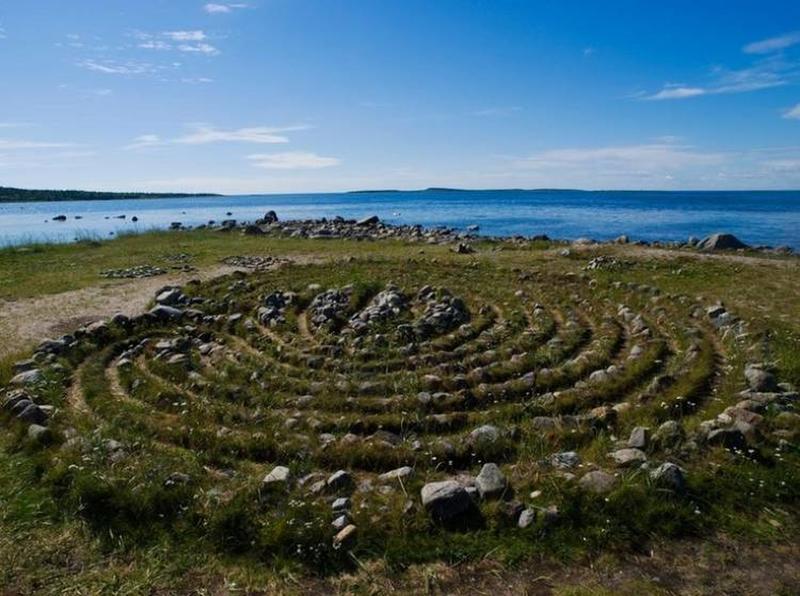
Why would anyone choose to build such delicate structures on an uninhabited island? Some researchers believe that they may have had a mystical use - perhaps the island was believed to be a portal to the underworld.
The terracotta army is an awesome thing to behold. If they were real, they would make for a fearsome enemy. Fortunately, they're made of clay, and they belong to the tomb of Quin Shi Huang in China.
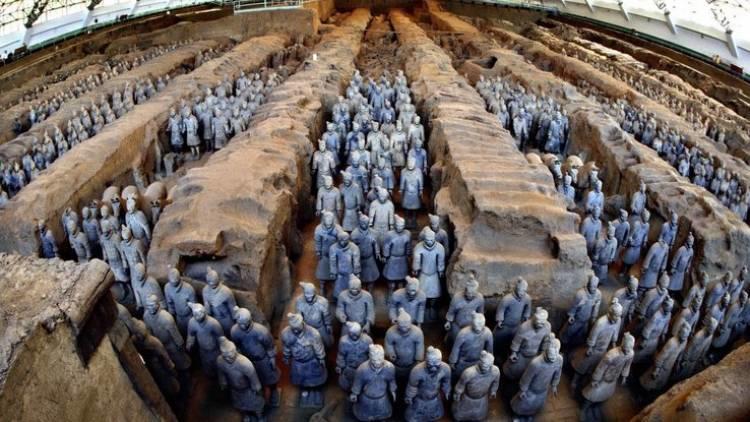
When the tomb was found by farmers in 1974, it was hailed as one of the great archaeological discoveries of the century. Quin Si Huang was the first-ever Chinese emperor, and the clay soldiers were his guards in the afterlife. What's mysterious about it? Well, the body of the emperor himself isn't there!
The locals of West Dunbartonshire, Scotland are so used to the Cochno Stone that children used to play on it. Thankfully it's now protected from such use, so the markings on the stone aren't worn away. That's good, because we're still trying to work out what they mean.
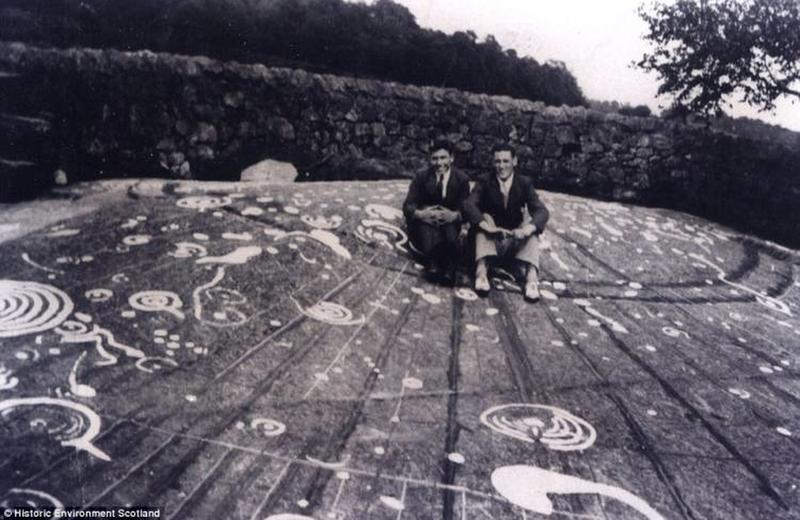
The stone is approximately 5,000 years old, and is one of the earliest surviving examples of Bronze Age cup and ring carvings. Theories about its content range from a star map to pure and simple decoration.
You've heard of the Great Wall of China. You might even have heard of Hadrian's Wall in England. We know why they were built. We have no idea why anybody created the Khatt Shebib, which is a wall in Jordan that stretches on for 93 miles.
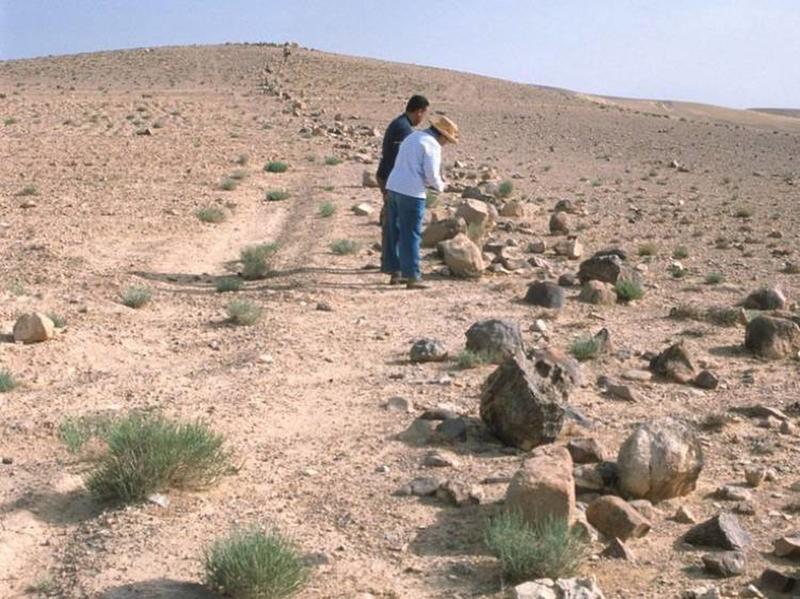
Somewhere between 1500 and 2000 years old, nobody had noticed the wall until a British diplomat sighted it by plane while flying over Jordan in 1948. It's not tall enough to be a defensive wall, so it could possibly have had an agricultural purpose.
We're conscious that we've just described this as an alien wedge. We have no evidence to say it was made by aliens - it's just that nobody else knows how to explain its existence. It was found in Aiud in 1974, and would best be described as an 'out of place object.'
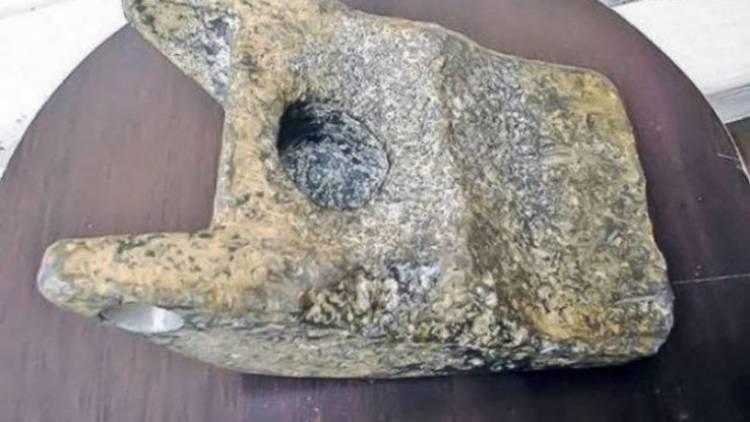
89% of the composition of the wedge is aluminum; a steel which can't occur naturally. It was invented during the 19th century. The wedge, however, is approximately 11,000 years old. How is this possible?
Coral Castle in Florida is a baffling testament to one man's grief. Everything that can be found there was built by a man called Edward Leedskalnin, who was driven to create it by a woman who left him.

Leedshalnin was approximately five feet tall. There are over 1100 tons of coral rock in the castle, some of which are arranged in blocks 4,000 feet thick. How one small man managed to lift, move, and assemble the coral is unknown. Locals at the time of his life feared that he was a witch.
Everybody knows about the legend of the Loch Ness monster. Scotland has built a whole tourism industry around the supposed existence of a gigantic prehistoric creature below the waters of the lake. All the photos of the beast supposedly taken over the years have been proven to be fake - except for this one.
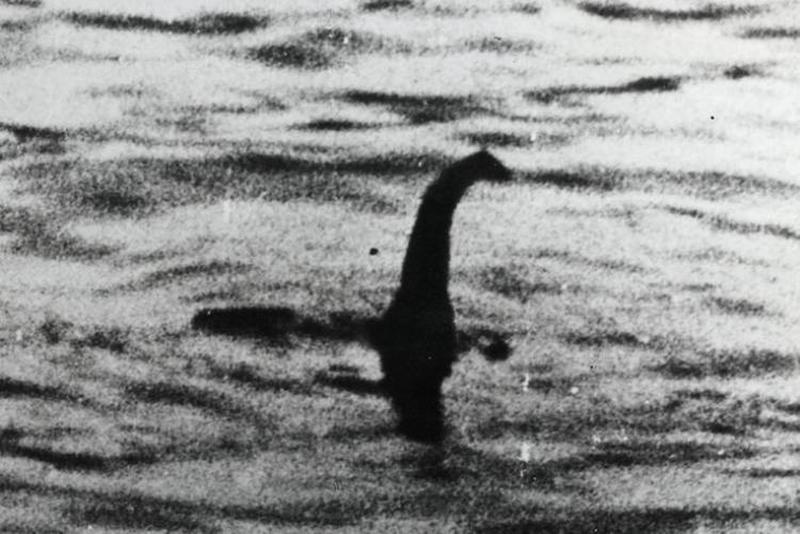
Regrettably, the photo is a little grainy, but that's because it's from 1934. It does however clearly show a long-necked creature looming out of the water. Nessie, is that really you?
Staying in Scotland for a moment, the Clava Cairns is also a popular topic with mystery enthusiasts. It is a Bronze Age cemetery - one which was 'welcoming' residents four thousand years ago, and remained in use for well over one thousand years.
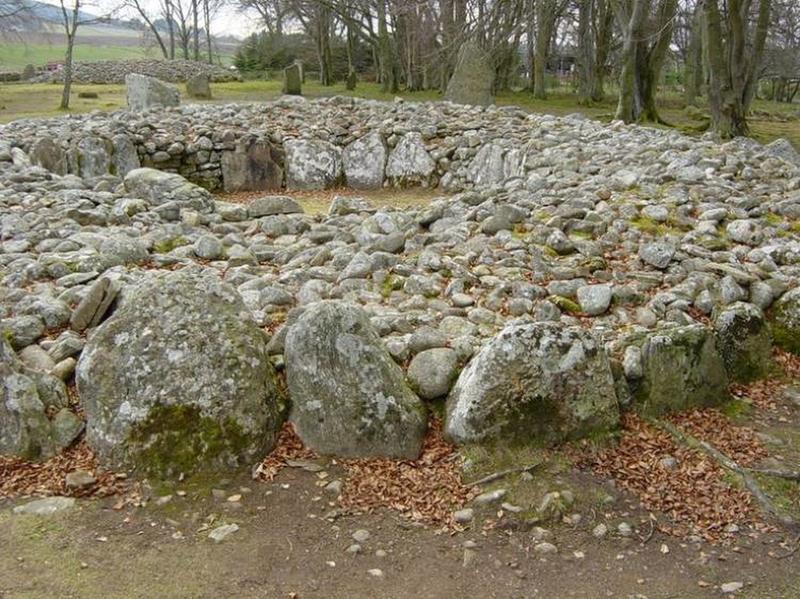
It would be historically significant even without a mystery because it's so well preserved, but it's the carvings at the site which people can't decipher. There are multiple indentations and cup marks on the stones, and their significance is a riddle.
You just knew we'd be visiting Stonehenge at some point during this list! This stone circle, which can be found in the south west of England, is one of the best-known historical sites in the entire world. Its fame hasn't brought it any detailed understanding, though.

Most people now agree that the stones are a form of ancient calendar, which tracked the movement of the Sun and the Moon. What we don't know is how on earth people managed to move the stones into position 5000 years ago.
Baalbek itself is a mysterious ruin, and one which we could write about all day. For now, though, we're just going to focus on the trilithion, which forms part of the Temple of Jupiter. The trio of stones each weigh a back-breaking 800 tons.

The temple is 21 feet above the courtyard, and 40 feet above the land that surrounds it. There's no way in the world that the stones should have been moveable; the quarry they came from is downhill, and we'd have a hard job lifting them using modern technology.
As soon as you saw Stonehenge on this list, you probably knew that the Great Pyramid of Giza was coming! Because the Egyptian pyramids are such a popular tourist destination, we've all just accepted that they exist, and stopped asking how.
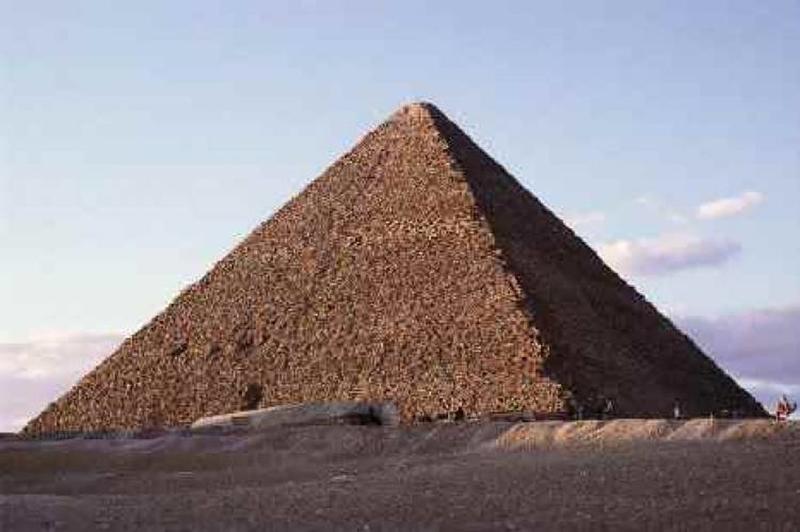
For more than 3,800 years, this was the tallest structure in the world. The record survived that long because the construction tools needed to build something this large simply didn't exist. Despite all the theories, we still don't know how they did it.
It would take a lot of bending the laws of plausibility to say that this imprint isn't a human hand. It has four defined fingers and a thumb, and resembles a hand in every single way. Despite that, scientists insist that it can't be.
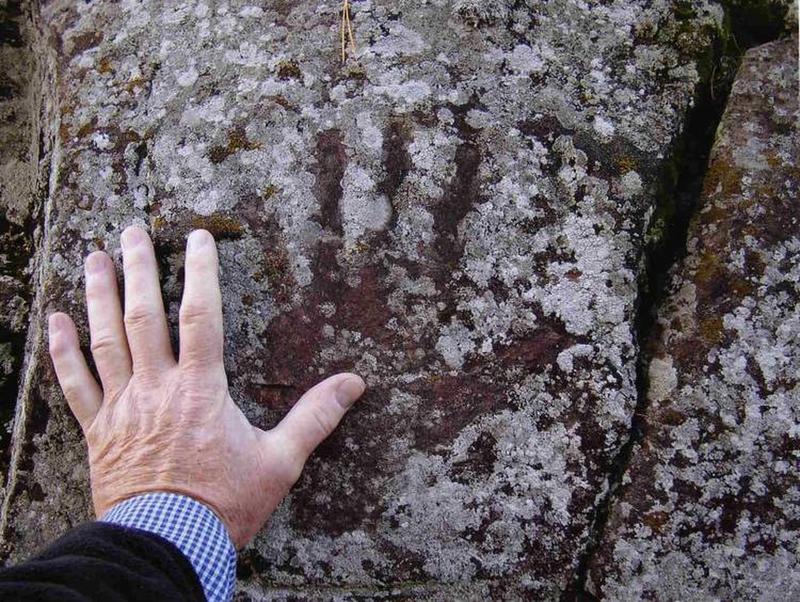
The imprint, which can be found on the Canadian side of the arctic, is approximately 110 million years old. Humans evolved approximately 2.8 million years ago. Who did this hand belong to, then? An alien visitor? A human time traveler?
Right at the start of this list, we looked at what seemed to be an ancient battery that had been found near Baghdad in Iraq. If our ancient ancestors really did have batteries, could they have been used to power bulbs of the kind we can see in this carving?

The carving was found below the Temple of Hathor, which is in Dendera, Egypt. The standing figures certainly appear to be holding enormous bulbs; they even have wires trailing away from them. They're either that or surfboards!
The Olmec people were the original inhabitants of Guatemala, and lived there approximately 2500 years ago, remaining until around the year 1400. They made a lot of temples and tombs, but never anything else that looked like this giant head.
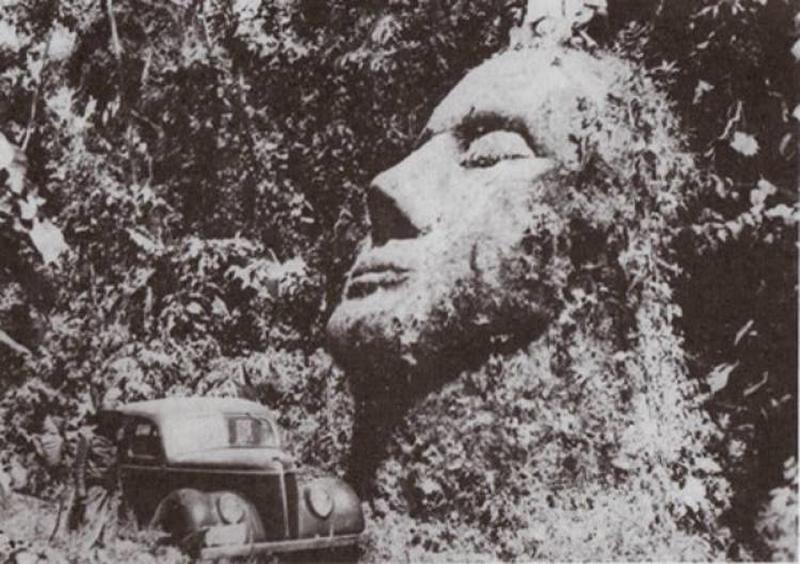
Something- or someone - must have impressed them a great deal in order for the one-off sculpture to be made. Confusingly, the head appears to have Caucasian features. No Caucasians we're aware of had ever visited Guatemala by the time the statue was made.
Piri Reis was an admiral in the navy of Turkey, and as such he was an experienced sea traveler. Wherever he went, he took his own hand-drawn personal map with him. So far, you're probably wondering what the big deal is. The answer lies with the map's content.
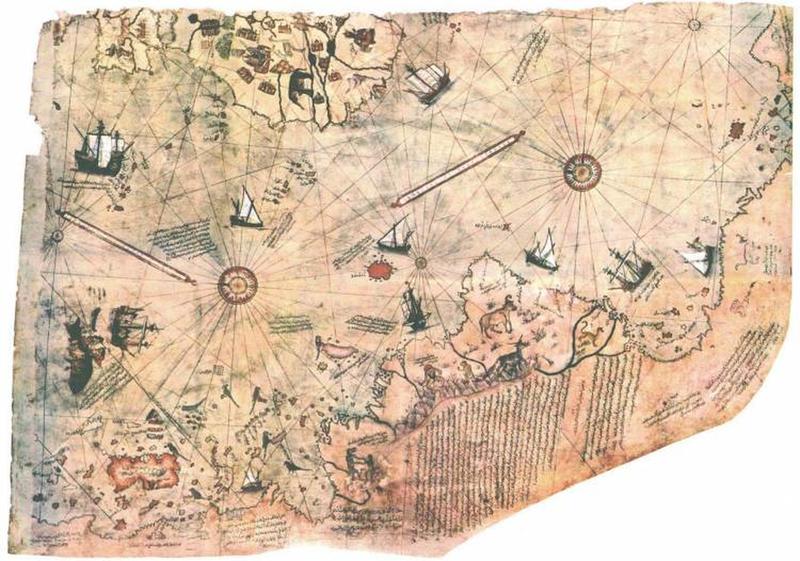
On Reis' map, we can see Europe, Brazil, and North Africa. There are a number of islands dotted around the sea, too. The head-scratcher is the inclusion of the coast of Antarctica. The map was drawn in 1513, and Antarctica wasn't officially discovered until the 1800s.
The idea of creating an artificial city sounds like something from the future. We'd be capable of it today if we put our minds to it, but it wouldn't be an easy job. It also wouldn't be an original idea. Someone did it 2200 years ago.
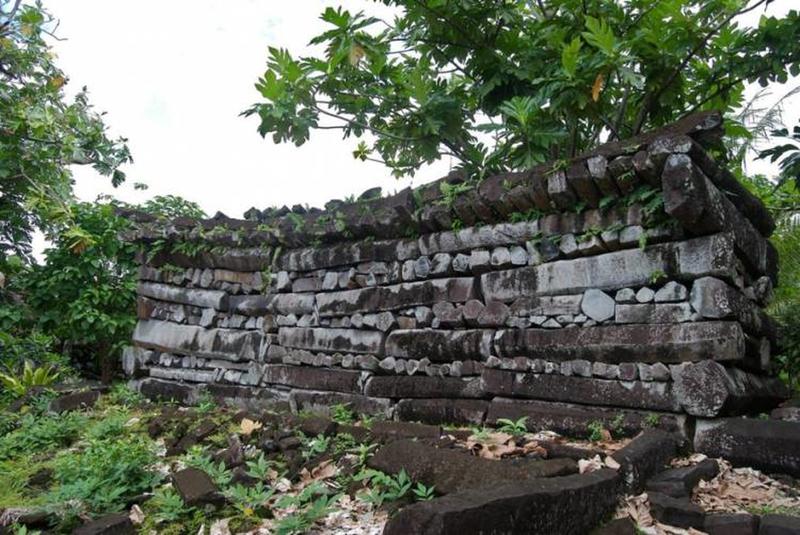
This is a picture of Nan Madol, which can be found close to Micronesia. Not a single shred of it is natural; the whole thing was built out of coral reef. We have no explanation as to how and why.
If the ancient handprint in Canada didn't convince you that we might be wrong about when the first humans appeared, perhaps this will. It's a footprint, and it's firmly embedded in a coal seam in Fisher Canyon, Nevada.

Coal takes a very long time to form. This particular seam is approximately fifteen million years old, so the footprint has to be of a similar age. Also, it's clearly not a barefoot; whoever made it was wearing a shoe. What we have here is either fast-forming coal, or an ancient astronaut.